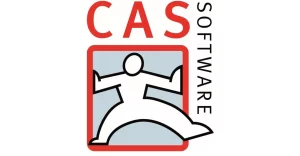Gene Marks predicts the end of Microsoft Dynamics 365
Gene Marks, entrepreneur, author and CRM specialist, caused a stir last week with his article in the Forbes magazine. He predicted the end of Microsoft Dynamics 365, the tool for ERP and CRM from Microsoft.
Microsoft Dynamics 365 is a business software from Microsoft. It combines ERP and CRM solutions in a common cloud. For example, modules for finance, sales, administration or marketing can be integrated. Dynamics uses a modular structure. Only what is really necessary is implemented.
You can find more information about the cloud system Microsoft Dynamics 365 here.
Companies that rely on solutions from Microsoft may therefore have to adjust to one or the other change in the future. Microsoft Dynamics 365 already offers seamless integration of some Office 365 applications into the business tool through Microsoft Teams. According to Marks, this development will spell the end of Microsoft Dynamics in the next few years.
Teams as a link between the individual Microsoft 365 products
Recent developments show: Microsoft is aiming for barrier-free use of various Microsoft applications. For example, Microsoft integrated Teams Chat into the Dynamics 365 cloud solution, among other things, resulting in immense time savings for companies. The integration not only enables the sharing of media and files between the platforms, but also an analysis of data and thus an optimization of CRM and ERP systems.
This reorientation is closely related to the Corona pandemic. It was only through this crisis and the digital transformation that accompanied it that Microsoft Teams was able to really take off. Teams is even more important to many companies today than most other Office 365 applications. Even Word and Excel have been overtaken by Teams in terms of relevance.
However, this development is not limited to Microsoft. Rather, other vendors in the CRM and ERP space are also jumping on this bandwagon. For example, it was announced on 03.12.2020 that Microsoft competitor Salesforce will take over the collaboration tool Slack. We already reported in detail about the $27.7 billion deal here. And here, the Teams product was also a contributing reason for the purchase decision.
What are the consequences of this trend?
According to Gene Marks, the trend will also lead to a long-term demand for a complete solution that combines Office 365 and Dynamics 365. At least, if you go by what most companies want: many want a unified, all-encompassing complete solution.
That is, a solution that combines customer relationship management, enterprise resource planning and all Office 365 applications. It is, so to speak, the search for the Holy Grail and thus possibly the end of the Microsoft Dynamics brand.
Comment: What does a possible end of Microsoft Dynamics mean for the users?
According to the first analysis of Gene Marks’ thesis, it basically only means: the brand name of Dynamics 365 will probably disappear. A new product brand or line with a new name will emerge. Microsoft will then offer this as a complete modular system to the various target groups for modular use.
Because it is clear that there probably won’t be an egg-laying pillow. However, the current developments also show a clear line from Microsoft: the company is striving to make the use of all Microsoft tools as barrier-free as possible. There are many indications of a large platform – at the expense of the Dynamics 365 brand.
Should this really mean the end of Microsoft Dynamics? Then customers and service providers will have to adjust to a new name and changed solution. There will, of course, also be changes in sales at Microsoft as well as new functions that employees will have to get used to.
Users may have to adjust to a confusing flood of new names. On the other hand, the integration also offers the possibility of a more efficient way of working and thus time savings for customers.
Our conclusion
Should Microsoft succeed in combining Dynamics 365 and Office 365, e.g., via the Teams “interface,” this could, on the whole, generate a clear advantage on the part of users.
However, there is also the risk that the changeover to a new system will be more complicated. Microsoft is basically on the right track; in the end, implementation will determine success or failure. More clarity definitely points to success.
Note: This is a machine translation. It is neither 100% complete nor 100% correct. We can therefore not guarantee the result.










 CAS Software AG ist Marktführer für Kundenbeziehungsmanagement (CRM) im deutschen Mittelstand. Ob Marketing, Vertrieb oder Service – Anwender profitieren von effizienten Prozessen auf einer einheitlichen Datenbasis.
CAS Software AG ist Marktführer für Kundenbeziehungsmanagement (CRM) im deutschen Mittelstand. Ob Marketing, Vertrieb oder Service – Anwender profitieren von effizienten Prozessen auf einer einheitlichen Datenbasis.





